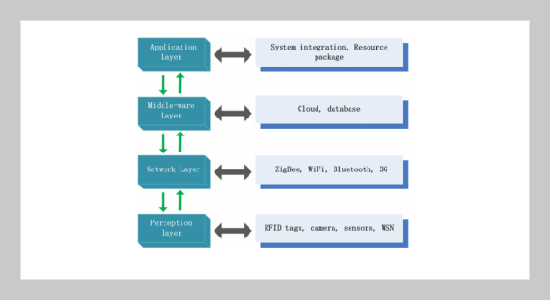REFERENCES
- [1] Lo’ai Tawalbeh, Fadi Muheidat, Mais Tawalbeh, and Muhannad Quwaider. IoT privacy and security: Challenges and solutions. Applied Sciences (Switzerland), 10(12):1–17, 2020.
- [2] Anca D. Jurcut, Pasika Ranaweera, and Lina Xu. Introduction to IoT Security. In IoT Security, number December, pages 27–64. 2020.
- [3] Anca D. Jurcut, Tom Coffey, and Reiner Dojen. Design requirements to counter parallel session attacks in security protocols. In 2014 12th Annual Conference on Privacy, Security and Trust, PST 2014, number April 2018, pages 298–305, 2014.
- [4] Heng Fan, Yi Nan Wang, Li Jing, Jie Dong Yue, Han Duo Shi, Yong Liang Zhang, and Liang Zhu Mu. Quantum cloning machines and the applications, 2014.
- [5] Miloslav Dušek, Norbert Lütkenhaus, and Martin Hendrych. Quantum cryptography. In Progress in Optics, volume 49, pages 381–454. 2006.
- [6] Sreraman Muralidharan, Linshu Li, Jungsang Kim, Norbert Lütkenhaus, Mikhail D. Lukin, and Liang Jiang. Optimal architectures for long distance quantum communication. Scientific Reports, 6(November 2015):1–10, 2016.
- [7] Asma Belhaj Mohamed, Ghada Zaibi, and Abdennaceur Kachouri. Implementation of RC5 and RC6 block ciphers on digital images. In International MultiConference on Systems, Signals and Devices, SSD’11 - Summary Proceedings, number June 2014, 2011.
- [8] Keyur K Patel, Sunil M Patel, and P G Scholar. Internet of Things-IOT: Definition, Characteristics, Architecture, Enabling Technologies, Application Future Challenges. International Journal of Engineering Science and Computing, 6(5):1–10, 2016.
- [9] K. Rose, S. Eldridge, and C. Lyman. The internet of things: an overview. Internet Society, page 53, 2015.
- [10] Abhishek Mahajani, Vinay Pandya, Isaac Maria, and Deepak Sharma. file:///D:/big data/chapter 1/pradeep2017.pdf, volume 904. 2019.
- [11] Kejun Chen, Shuai Zhang, Zhikun Li, Yi Zhang, Qingxu Deng, Sandip Ray, and Yier Jin. Internet-ofThings Security and Vulnerabilities: Taxonomy, Challenges, and Practice. Journal of Hardware and Systems Security, 2(2):97–110, 2018.
- [12] T Kowsalya, S Sukirtha, and S Krithika. Quantum Key Distribution for IoT -A Review Quantum Key Distribution for Internet of Things ( IoT ) - A Review. (November), 2019.
- [13] CN Yang and CC Kuo. Enhanced quantum key distribution protocols using BB84 and B92. Proceedings of the 2002 International . . . , (January 2002):1–13, 2002.
- [14] E. O. Kiktenko, A. O. Malyshev, A. A. Bozhedarov, N. O. Pozhar, M. N. Anufriev, and A. K. Fedorov. Error Estimation at the Information Reconciliation Stage of Quantum Key Distribution. Journal of Russian Laser Research, 39(6):558–567, 2018.
- [15] Nelson J. Muga, Mário F.S. Ferreira, and Armando N. Pinto. QBER estimation in QKD systems with polarization encoding. Journal of Lightwave Technology, 29(3):355– 361, 2011.
- [16] Miralem Mehic, Marcin Niemiec, and Miroslav Voznak. Calculation of the key length for quantum key distribution. Elektronika ir Elektrotechnika, 21(6):81–85, 2015.
- [17] Etsuko Sugawara and Hiroshi Nikaido. Properties of AdeABC and AdeIJK efflux systems of Acinetobacter baumannii compared with those of the AcrAB-TolC system of Escherichia coli. Antimicrobial Agents and Chemotherapy, 58(12):7250–7257, 2014.
- [18] Xiaojun Xiang, Qiong Li, Shahnawaz Khan, and Osamah Ibrahim Khalaf. Urban water resource management for sustainable environment planning using artificial intelligence techniques. Environmental Impact Assessment Review, 86, 2021.
- [19] Osamah Ibrahim Khalaf, Kingsley A. Ogudo, and Manwinder Singh. A fuzzy-based optimization technique for the energy and spectrum efficiencies tradeoff in cognitive radio-enabled 5g network. Symmetry, 13(1):1–14, 2021.
- [20] Bilal S.A. Alhayani and Haci Llhan. Visual sensor intelligent module based image transmission in industrial manufacturing for monitoring and manipulation problems. Journal of Intelligent Manufacturing, 32(2):597–610, 2021.
- [21] Milind E. Rane and Umesh S Bhadade. Comparative Study of ROI Extraction of Palmprint. IJCSN International Journal of Computer Science and Network, 5(2), 2016.
- [22] Osamah Ibrahim Khalaf, Kingsley A. Ogudo, and Manwinder Singh. A fuzzy-based optimization technique for the energy and spectrum efficiencies tradeoff in cognitive radio-enabled 5g network. Symmetry, 13(1):1–14, 2021.
- [23] Bilal Al Hayani and Haci Ilhan. Image Transmission Over Decode and Forward Based Cooperative Wireless Multimedia Sensor Networks for Rayleigh Fading Channels in Medical Internet of Things (MIoT) for Remote Health-Care and Health Communication Monitoring. Journal of Medical Imaging and Health Informatics, 10(1):160–168, 2019.
- [24] Milind E. Rane and Umesh S. Bhadade. Multimodal score level fusion for recognition using face and palmprint. International Journal of Electrical Engineering Education, 2020.
- [25] Shibo Lu, B. T. Phung, and Daming Zhang. A comprehensive review on DC arc faults and their diagnosis methods in photovoltaic systems, jun 2018.
















